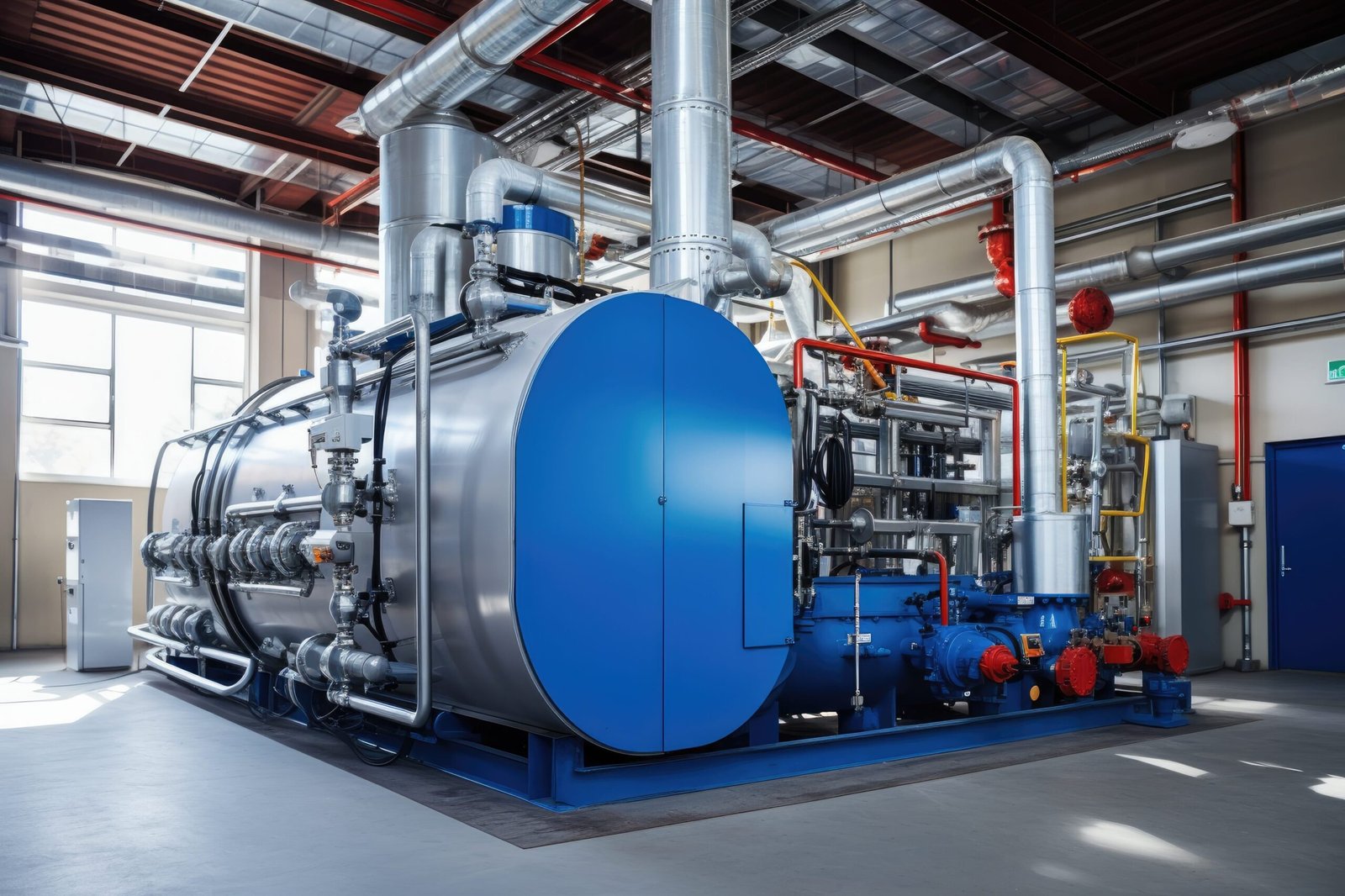Industrial boilers are the backbone of energy-intensive sectors such as power generation, petrochemicals, food processing, and manufacturing. These systems operate under extreme conditions, and each component is pivotal in optimizing performance, enhancing efficiency, and ensuring longevity. Choosing the right parts is crucial for minimizing downtime, maximizing productivity, and driving sustainable operations.
Here are the top 10 essential boiler parts, their functions, and how they cater to the needs of specific industries.
Economizer Coil
The economizer coil is a heat recovery unit that enhances the overall efficiency of a boiler system by capturing residual heat from flue gases. This preheats the feedwater before it enters the boiler, reducing the fuel required for steam generation.
Function:
- Captures waste heat from exhaust gases.
- Preheats feedwater, lowering energy consumption.
Why It Matters:
In power plants, economizers can improve fuel efficiency by up to 10%, significantly reducing operational costs. In steel manufacturing, economizer coils help heat recovery during smelting processes, lowering carbon emissions and improving plant sustainability. Petrochemical plants benefit from this component by reducing energy wastage during distillation and refining.
Evaporator
The evaporator in boiler is the core component that converts water into steam by absorbing heat from combustion gases. This phase change is vital for generating the high-pressure steam required in industrial processes.
Function:
- Converts liquid water to steam.
- Operates under high pressure to optimize energy transfer.
Why It Matters:
In oil refineries, evaporators play a key role in steam cracking and distillation. The textile industry uses evaporators to generate consistent steam for fabric treatment, while food processors rely on evaporators to sterilize products and maintain hygiene standards. Efficient evaporators reduce energy waste and ensure smooth, uninterrupted operations.
Waterwall Panels
Waterwall panels are lined along the furnace walls, absorbing radiant heat from combustion. These panels protect the boiler’s structural integrity and improve thermal efficiency by directly transferring heat to the water.
Function:
- Absorbs radiant heat from the furnace.
- Shields internal structures from excessive heat.
Why It Matters:
In waste incineration plants, water wall panels prevent thermal damage from high-temperature waste burning—the cement industry benefits from water wall panels by improving energy recovery from kiln operations. Petrochemical plants rely on water walls to enhance energy efficiency during high-heat chemical reactions.
Steam Header
The steam header plays a critical role in distributing steam generated by the boiler to various parts of the industrial plant. Controlling pressure and flow ensures that steam reaches each process with the required intensity.
Function:
- Distributes steam uniformly across systems.
- Manages steam pressure for different processes.
Why It Matters:
In pharmaceutical plants, precise steam control is essential for maintaining sterilization and quality standards. Paper mills use steam headers to drive pulp-drying machinery, while textile factories rely on them to manage steam across dyeing and drying processes. Consistent steam distribution enhances productivity and minimizes wastage.
Burner
The burner ignites fuel and air to produce the heat for steam generation. A well-calibrated burner ensures efficient combustion, reducing fuel consumption and emissions.
Function:
- Combines fuel and air for combustion.
- Regulates flame intensity for optimized heat generation.
Why It Matters:
In asphalt plants, burners provide the intense heat required to process bitumen. Metal processing industries use burners in forging and smelting applications, where precise temperature control is essential. Burners with advanced technology contribute to lower fuel costs and compliance with environmental regulations.
Boiler Shell
The boiler shell forms the outermost layer of the boiler, containing water, steam, and pressure components. It must withstand high internal pressures and extreme temperatures without deformation or cracking.
Function:
- Houses the entire boiler system.
- Maintains pressure integrity during operations.
Why It Matters:
In sugar mills, boiler shells sustain intense pressure during crystallization and evaporation. Oil refineries operate under high-pressure conditions where boiler shells must withstand long operating hours. A durable boiler shell minimizes the risk of catastrophic failure and enhances operational safety.
Superheater
The superheater increases the temperature of saturated steam, producing dry steam that is more efficient for driving turbines and mechanical systems.
Function:
- Converts wet steam to dry, superheated steam.
- Prevents condensation in turbines and pipes.
Why It Matters:
Superheated steam boosts turbine efficiency in power generation, translating into greater electricity output. In marine vessels, superheated steam enhances engine performance, reducing operational costs. Breweries use superheated steam to maintain temperature consistency in brewing and fermentation processes.
Feedwater System
The feedwater system ensures the boiler maintains a steady water supply, preventing overheating and dry-firing.
Function:
- Regulates water supply to the boiler.
- Maintains proper water levels during operations.
Why It Matters:
In automotive plants, steam-powered equipment relies heavily on feedwater systems to prevent production downtime. Beverage manufacturers need consistent feedwater to ensure pasteurization and sterilization processes run smoothly. Chemical plants depend on feedwater systems to avoid contamination and maintain boiler health.
Blowdown System
The blowdown system removes impurities and sediments from the boiler, preventing scaling and corrosion.
Function:
- Flushes out dissolved solids and impurities.
- Prevents scaling and improves efficiency.
Why It Matters:
Food processors rely on blowdown systems to ensure clean steam for cooking and sterilization. In textile plants, preventing scale buildup ensures consistent fabric quality. Pharmaceutical companies need pure steam to meet stringent quality standards.
Refractory Material
Refractory linings protect the boiler’s internal components from extreme heat and chemical corrosion, ensuring long-term durability.
Function:
- Insulates internal surfaces from heat.
- Prevents thermal wear and tear.
Why It Matters:
In glass manufacturing, refractory linings withstand high furnace temperatures. Waste-to-energy facilities rely on refractory materials to protect boilers from corrosive byproducts during incineration.
By selecting the right boiler components, industries can enhance efficiency, reduce energy consumption, and ensure long-term reliability. Each part plays a role in creating a robust, high-performance boiler system tailored to specific industrial needs.

